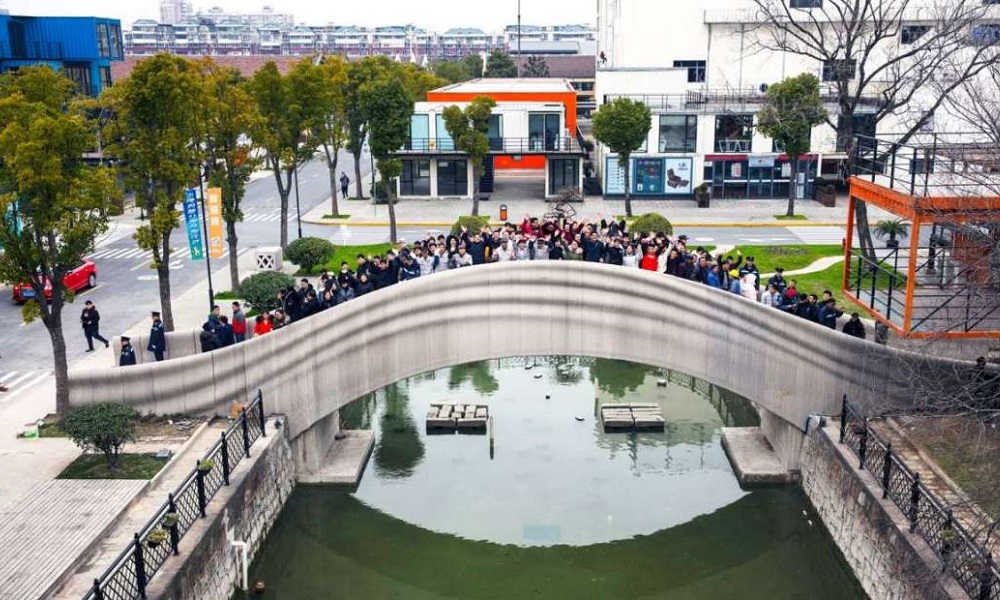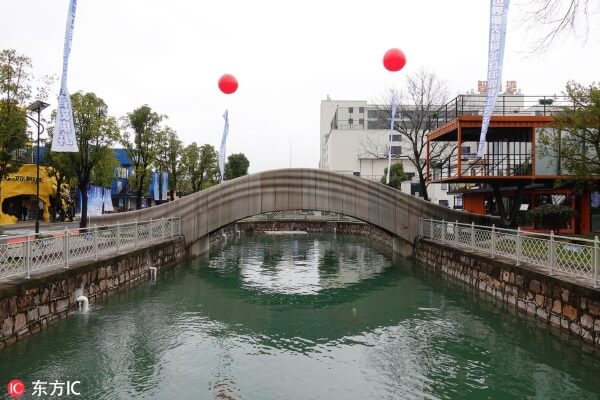Meet the longest 3D printed bridge in the world
Posted By Lucie Gaget on Feb 20, 2019 | 0 comments
In the construction industry, 3D printing is constantly improving, allowing for the creation of more and more outstanding architectural projects. In this blog post, we are going to tell you about a new success: The longest 3D printed bridge in the world! From 3D printed houses to 3D printed urban features, additive manufacturing at an architectural scale is becoming quite popular, offering many advantages.
Discover all you need to know about this new impressive 3D printed bridge! We will talk about its creation, but also about the many advantages offered by this technology allowing for manufacturing at such a big scale.
Why bridges should be 3D printed
A new and reliable manufacturing technique
The advantages of additive manufacturing for the construction sector are numerous. Indeed, it could become a real time and money saving technique. It is also making it possible to manufacture architectural creations on site, in no time, with only one machine!
Indeed, among the most popular printing techniques to create structures such as bridges is the robotic arm extruder. This method is called contour crafting – it’s quite similar to the FDM (Fused Deposition Modeling) technique used by most of the desktop 3D printers. Think about what could be possible using this technology at an architectural scale!
https://www.3ders.org/articles/20190116-worlds-longest-3d-printed-bridge-opened-in-shanghai.html
Design possibilities redefining our urban landscape
Let’s talk a little bit about the design possibilities offered by 3D printing. Additive manufacturing allows freedom in the designs and, intricate designs can be printed in just one part.
Creating a 3D model of a part before creating the real object allows for quite efficient work on designs by using a 3D modeling software. Indeed, additive manufacturing is giving a lot of freedom when it comes to design. It is making it possible to create both simple and complex geometries, and to give life to the craziest and most impressive designs. For example, with injection molding, it can be complicated and expensive to create complex objects.
Faster and cheaper?
3D printing a bridge, as we will see with our following example, saves time. And if this kind of construction takes less time to manufacture, it also means that it will definitely cost less money! Additive manufacturing is known to be a quick manufacturing technique, as it is mostly automated and the 3D printer can work continuously.
Manufacturing buildings, bridges or any architectural structures can be time-consuming, but 3D printers could become the perfect solution.
The world’s longest 3D printed bridge is here!
Discover this amazing 3D printed bridge
A 3D printed concrete bridge has been opened in Shangai: it happens to be the world’s longest 3D printed bridge. Xu Weiguo designed this bridge based on an ancient bridge that was built during the Sui Dynasty (581-618 CE) and took 11 years to be manufactured. Additive manufacturing technology allowed this structure to be built in only 450 hours.
If you want to go see it with your own eyes, this concrete footbridge is crossing an artificial river in the Wisdom Bay Innovation Park of Baoshan District.
But what is the point of this experiment? It shows us the possibility of building structures as big as a pedestrian bridge. It also shows that additive manufacturing is constantly improving itself, by printing bigger projects.
https://www.3ders.org/articles/20190116-worlds-longest-3d-printed-bridge-opened-in-shanghai.html
How has this bridge been made?
The bridge has not been 3D printed in one part, it is made of 68 side pieces and 64 deck pieces. The printing process took 450 hours and it cost two-thirds of what this kind of bridge usually cost.
But that is not it! Indeed, this 3D printed pedestrian bridge also includes sensor accumulating displacement data. These data will be used to improve the design of upcoming 3D printed bridges. This 3D printed architecture will be improved, and we can already see it as a real revolution.
You may think that a bridge made using 3D printing is not strong enough. And we can say that you are wrong. 100 people have been invited to the opening of this bridge, and they all stood on it at the same time. Here is proof that the bridge is actually quite strong, and the technology promising!
Not the first 3D printed bridge!
While this bridge is not the first one made using additive manufacturing, it is the longest one creating using this cutting edge technology. But, as a reminder, here are a few examples of what has been made before:
- The world’s first 3D printed bridge for cyclists
Dutch cyclists now have their own cycling bridge, and thanks to Eindhoven University of Technology and BAM Infra, it is printed. This concrete 3D printed bridge comes from the Netherlands. It is a really strong and resistant structure, its designers say that it could easily handle the weight of 40 trucks! Even if it is quite small, this bridge is a real success!
Image: BAM Infra
- 3D printed pedestrian bridge in Madrid
This concrete bridge has been built in Madrid, Spain. It is 12 meters long and is printed in micro-refined concrete, and reinforced with thermoplastic polypropylene. It has been designed by The Institute of Advanced Architecture of Catalonia and is made of eight different 3D printed parts.
As you can see, 3D printing a bridge could become more and more normal in the upcoming years. What do you think about these creations? Share your views with us in the comments.
At Sculpteo, we are not 3D printing bridges yet, but we are ready to talk with you about all your 3D printing projects! Feel free to contact our sales team, or upload directly your 3D files on our online 3D printing service.
Do you want more news about the 3D printing world and innovations? Subscribe to our weekly newsletter right now and receive all the news!
Photo credit: http://mentalfloss.com/article/573212/worlds-longest-3d-printed-bridge-shanghai / TSINGHUA UNIVERSITY


 Connect with Google
Connect with Google Connect with Facebook
Connect with Facebook


